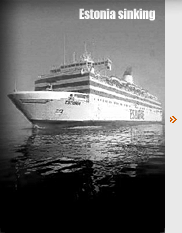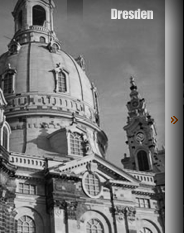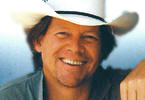
|

|

|

|

|
 9-11 Archive 2005
9-11 Archive 2005 The Censored Eyewitness Testimony of William Rodriguez
The Censored Eyewitness Testimony of William Rodriguez

The Censored Eyewitness Testimony of William RodriguezJune 16, 2005 Calling for an international investigation of the 9-11 terror attacks, Jimmy Walter's European Truth Tour is presenting European audiences with evidence from researchers and compelling testimony from a survivor that shows the official version of events to be false. LONDON, England - After Amsterdam, Berlin, and Paris, the 9-11 European Truth Tour sponsored by Jimmy Walter has traveled to London and Madrid. Despite a media black out from the controlled press, in the first three cities of the tour, hundreds of citizens attended each event. The tour presented back-to-back shows in Paris on May 24 and 25. Thierry Meyssan, the French author of two books on the 9-11 attacks hosted the Paris event and will participate in the London and Madrid shows. After Madrid, the tour will visit Vienna, Manchester, and Rome. The tour's most compelling testimony comes from William Rodriguez, the 44-year-old former porter who worked in the twin towers of the World Trade Center for 19 years before 9-11. Most importantly, his testimony contradicts the official version and provides supporting evidence that the towers were destroyed by explosives. The testimony of Rodriguez, who had one of the five master keys for the towers, was taken during several hours of closed session in May 2004, but did not appear in the official 9-11 Commission Report. The five investigators who questioned Rodriguez became "very angry," he said. "Not at me, but at what I was saying." I interviewed Rodriguez, who single-handedly cleaned the three stairwells of the North Tower for ten years, at the Louvre museum in Paris on May 25. On September 11, 2001, Rodriguez, who worked for American Building Maintenance, was 30 minutes late for work arriving at 8:30 a.m. After leaving his backpack in his closet on the 33rd floor he went to his company office in the tower's basement. At 8:45, he was talking with his supervisor in the first basement level, B1, when he heard and felt a tremendous explosion. Rodriguez said he felt the first explosion come from a lower basement level. The towers had 6 basement levels. The building shook, the ceiling fell, and some of the sprinklers began spraying. "Oh my God, what happened?" Rodriguez, who survived the first bombing of the WTC in 1993, said he recalled saying to his boss. "I think it was the electrical generators." No sooner had he spoken these words than a second explosion shook the building, this time coming from the upper part of the tower. This second shock, Rodriguez said, shook the building and cracked the walls. "The building moved," he said. At this point, Felipe David, a Honduran who worked for Aramark and maintained the tower's vending machines, appeared before Rodriguez with his arms outstretched. "It looked like clothing was hanging from his fingers," Rodriguez said, "but it was the skin from his arms." "Explosion, explosion," David said. "The elevator, the elevator." Rodriguez then felt a third explosion coming from above. "The ground was shaking," he said. "I thought it was an earthquake." "We've go to get out of here," Rodriguez told the others as he assisted David and 14 others out of the building through the loading dock on Vesey Street, across from WTC 7. David also had facial injuries that looked to Rodriguez as if he had been "burned and cauterized." "It did not make sense," Rodriguez said about the official version that says these explosions in the basement occurred from jet fuel falling down the elevator shafts. The fact that he felt the explosion in the basement first indicates that it was not caused by falling jet fuel. Rodriguez noticed that elevator doors in the lobby and basement levels appeared to have been blown open from below. After bringing David to an ambulance, Rodriguez looked up and saw smoke coming from the top of the tower. Unable to see the tower's communication mast, Rodriguez became concerned for the safety of his friends who worked at the Windows of the World restaurant at the top of the tower. "We've got to go back," Rodriguez said. "Stay here," his supervisor said, "don't go in there." Taking a radio from a security guard, Rodriguez went back into the building via the loading ramp. Thinking that a bomb had been exploded in the building, Rodriguez checked the trucks he passed. They were all open and he continued on into the South Tower to check the Operation Control Center. Not finding anybody in the control center, he returned with another maintenance worker to the North Tower. At the B1 level he heard the shouts of people coming from a freight elevator. After forcing the elevator door open with a pipe he saw two people trapped in rising water in the elevator car stuck between the B2 and B3 levels. The rising water, he said, came from the sprinklers or broken pipes. Using a ladder, Rodriguez climbed down to the top of the car and pulled the two workers to safety. After taking them to an ambulance, Rodriguez returned to the tower and began up the stairs with David Lim, a Port Authority police officer, and fire fighters. At the lobby level, he noticed that all the glass windows were broken on tower's west side and the marble had been knocked off of the walls. With his master key he opened the door to each level as they ascended and called out to the people on the floor. "Some had light and some did not," he said. At the 27th level he came across Ed Beyea, a quadriplegic who was being evacuated. As he continued up the stairs, his supervisors called him on the radio: "What are you doing there?" they asked. "Abandon the building now." "I can't." Rodriguez replied. "I have the key to the stairwell. I'm helping the fire department." "I heard many, many explosions," Rodriguez said. "We lost 65," he heard on the radio. Understanding that the 65th floor had collapsed down to the 44th floor sky lobby, Rodriguez and the others decided to descend and get out of the building. At the 27th floor they took Beyea in a gurney and carried him down the stairs. At the lobby level fire fighters and friends tended to Beyea. Rodriguez went out the west side entrance to check for an ambulance. As he came out of the building he heard the police say, "Don't look back. Don't look back," which caused Rodriguez to look back. What he saw was the remains of many people who had jumped from the towers and the body of a woman he had rescued from the 33rd floor. Falling glass had nearly cut her body in half, he said. Hearing the sound of the tower begin to fall, Rodriguez dove under the fire truck that was in front of the tower. Under the truck with two fire fighters, Rodriguez said he prayed to God for his body to remain intact so that his mother could recognize him. The tower collapsed around him and hot dust burned his skin. The truck however was not crushed and within a few hours Rodriguez was pulled out from under the truck. "I got out at the right moment," he said. "I was the last one out." Since 9-11, Rodriguez has chaired the Hispanic Victims' Group and the Victims' Support Group. While his story has been published in Colombia in the Spanish language book entitled Martes de Horror," it has not been available in English.
|
©2010 Christopher Bollyn | Sitemap | [email protected]

